[ May 3 - June 3, 2001 ]
Turkey is well known for its unique, beautiful and very diverse nature. The striking richness of Turkey is particularly amplified by three natural factors: a) the remarkable geological diversity and related differentiation of both the parent rocks and soils, b) the varied topography and related climatic factors affected by the Mediterranean and the Black Sea, and c) the moderate human interference which diversified ecosystem development in the last centuries. At present the number of Cerambycidae species occurring in Turkey is estimated to be about 500 and there is a very high degree of endemism among them. Moreover, each year new species are being described from this country. The facts that the Turkish people are very tolerant and friendly and that prices in Turkey are relatively low make Turkey an ideal country for biologists.
Equipped by a Swedish car, Norwegian saws, and an American GPS system our Czech group set off starting from Prague. It is a long way to Turkey and so we made a little stop in the south of Bulgaria and collected Dorcadion axillare Küster and Phytoecia (Pilemia) serriventris Holzschuh there. Soon we arrived in the European Turkey and visited Pinarhisar, a locality situated not far from the Bulgarian border. Here we collected Brachyta balcanica (Hampe), Dorcadion regulare Pic, and Neodorcadion exornatum (Frivaldsky). Having crossed the Dardanells by a ferry we reached the NW of the Asian Turkey, a region especially rich in Dorcadion species. In the surroundings of Balikesir, Manisa, Salihli, and Ödemis we recorded Dorcadion smyrnense (Linnaeus), Dorcadion coiffaiti Breuning, Dorcadion quadripustulatum Kraatz, Dorcadion weyersii Fairmaire, Dorcadion cinctellum Fairmaire, and Dorcadion triste triste Frivaldszky. Apart from Dorcadion species several other Cerambycidae were recorded in this region: Phytoecia (Pilemia) breverufonotata Pic, Agapanthia (Epoptes) asphodeli (Latreille), Agapanthia (Epoptes) lateralis Ganglbauer, Purpuricenus desfontainii inhumeralis Pic, and Cerambyx (Cerambyx) carinatus Küster.
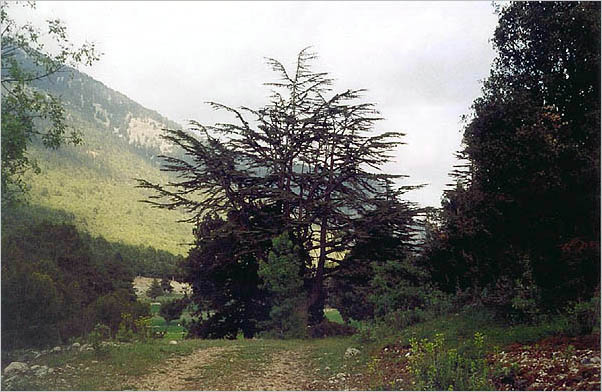
Figure 1 [Photo © M.Rejzek] S Turkey: Avlanbeli Gecidi (1120 m) 25 km S Elmali, 3632N 2959E, 10.-11.V.2001 |
Eventually after a long journey we arrived in the first locality planned for a detailed recording. The place is called Avlanbeli pass (1120 m, 3632N 2959E, 10.-11.V.2001) situated about 25 km south of Elmali (S Turkey) which we believe is the type locality of Rhagium elmaliense. This species has only recently been described according to a single specimen by Schmid (1999). In the pass we saw an exciting example of an almost intact Cedar forest of the Taurus mountains. Apart from Cedrus libani, Quercus calliprinos, Juniperus excelsa, Acer sempervirens, Acer platanoides, Ulmus montana, Populus tremula, and Cercis siliquastrum many other tree and shrub species were present (Figures 1 - 4). Soon we found out that the rich vegetation supports a very rich insect fauna as well. We recorded Molorchus tenuitarsis Holzschuh, Calchaenesthes oblongomaculata (Guérin-Méneville), Cortodera imrasanica Sama et Rapuzzi, Alosterna (Alosterna) anatolica Adlbauer, Purpuricenus dalmatinus Sturm, Delagrangeus (Delagrangeus) angustissimus angustissimus Pic, Stenhomalus bicolor (Kraatz), but most importantly our senior colleague Stanislav Kadlec (in Figure 2) managed to find Rhagium elmaliense Schmid, the second existing specimen, and in this way he confirmed the existence of this species.
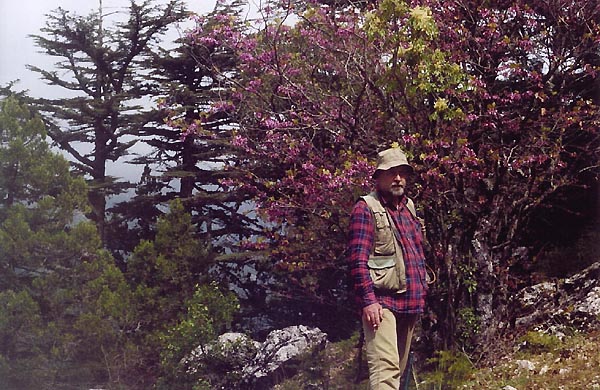
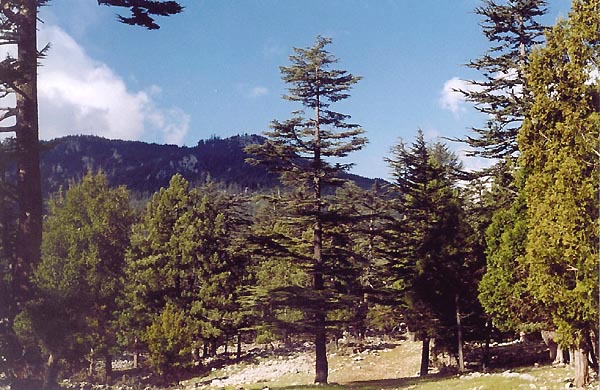
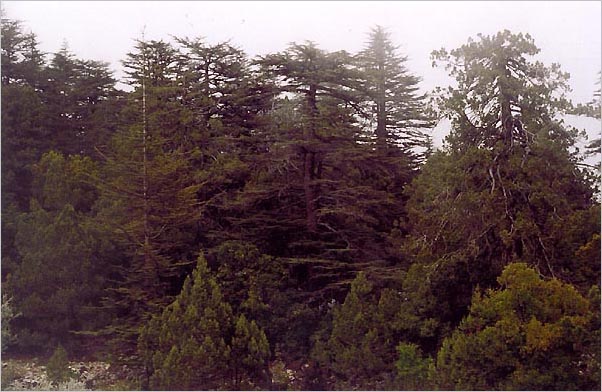
Figures 2 - 4 [Photo © M.Rejzek] S Turkey: Avlanbeli Gecidi (1120 m) 25 km S Elmali, 3632N 2959E, 10.-11.V.2001 |
Strongly encouraged by the great success we set off for Irmasan Gecidi, the type locality of another exciting longhorn beetle: Phymatodes (Poecilium) magnanii (Sama et Rapuzzi). On the way there we made a short stop in Perge (NE Antalya) where we managed to find Parmena mutilloides Sabbadini et Pesarini. In the evening we reached Irmasan Gecidi seeing the most exciting Abies cilicica forest. We put up our tents and went to bed with great expectations. It poured with rain the whole night. The next morning the sky was clouded and the heavy clouds had the most awkward colour we had ever seen: dark brown! Soon from these clouds a mixture of water and mud started to pour on the top of our heads and we were happy to get lost very quickly leaving Phymatodes magnanii in peace. As the rain was present in nearly all of Turkey we decided to go to the driest parts of the country: the south-east. And indeed as soon as we crossed the legendary Euphrates river the sunshine was back.
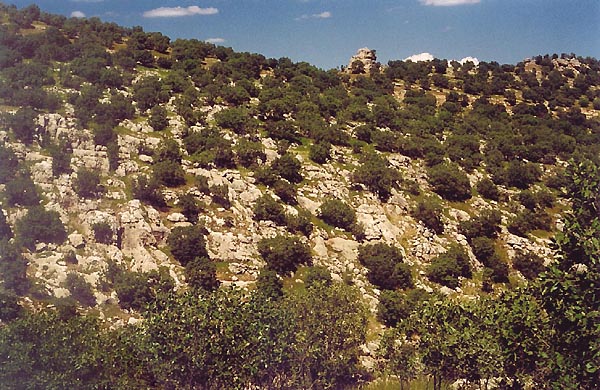
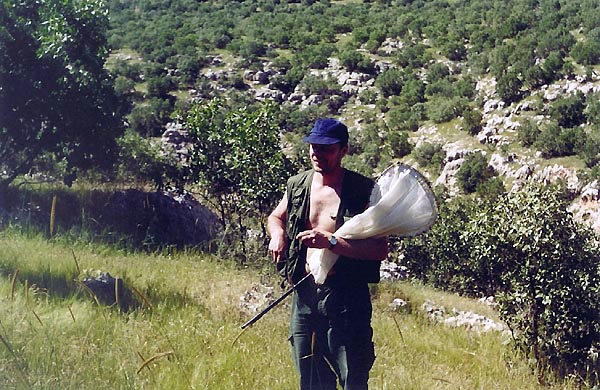
Figures 5 and 6 [Photo © M.Rejzek] SE Turkey: Hop Gecidi (Cinaralti village) 15 km NE Mardin, 3723N 4051E, 16.V.2001 |
Our second planned stop was the region between the cities Mardin and Midyat (Figures 5 - 9) and especially Hop Gecidi (Figures 5 and 6), the type locality of Trichoferus lunatus (Szallies) described in 1994 according to a single specimen. It was quite difficult to find any fragments of the dry Quercus brantii forest-steppe, a habitat typical for this region. The last remnants of this habitat revealed insect species like: Purpuricenus interscapillatus cornifrons Sabbadini et Pesarini, Purpuricenus dalmatinus Sturm (forming a distinct subspecies here), Calchaenesthes primis Özdikmen, Phytoecia (Pygoptosia) speciosa Frivaldszky, Phytoecia (Helladia) pretiosa Faldermann, and Phytoecia (Helladia) orbicollis adelpha Ganglbauer. Moreover, in a rather unusual substrate we collected larvae of an unknown Cerambycid. To our great surprise later Trichoferus lunatus (Szallies) hatched from these larvae. Again to our best knowledge this is the first record of this animal species since its description.
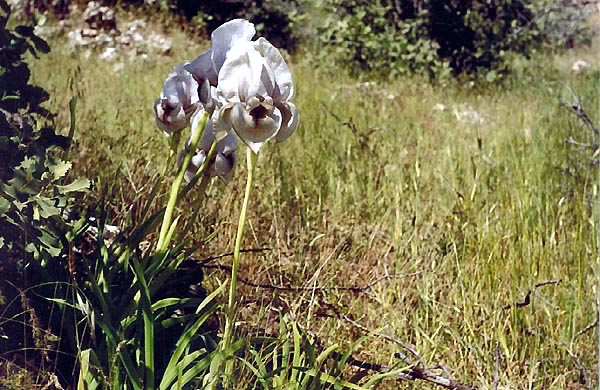 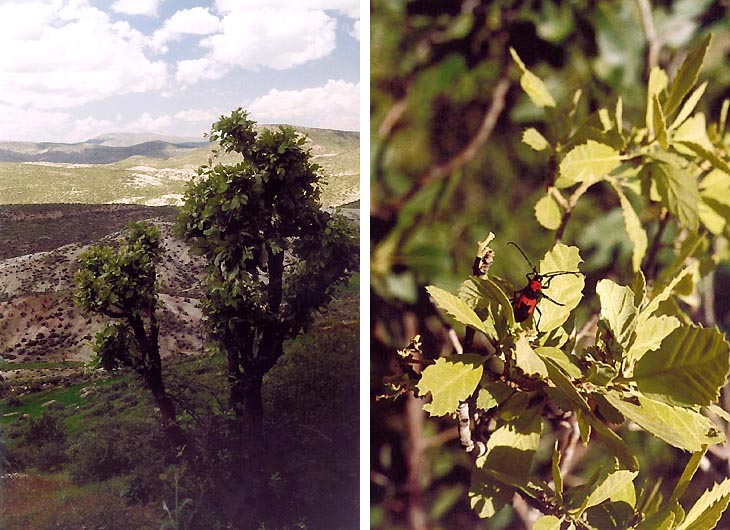
Figures 7 - 9 [Photo © M.Rejzek] SE Turkey: Haberli (1020 m) 33 km SE Midyat, 3717N 4135E, 17. and 19.V.2001 |
After crossing the river Tigris (Figure 10) we went northward to the lake Van where we made two short stops. In the surroundings of the city Tatvan (Figures 11 and 12) we collected Dorcadion holzschuhi Breuning, Phytoecia (Paracoptosia) compacta compacta (Ménétries), Phytoecia (Paracoptosia) bithynensis Ganglbauer, Stenocorus (Anisorus) quercus (Götz), Phytoecia (Helladia) millefolii millefolii (Adams), Agapanthia (Agapanthoplia) coeruleipennis Frivaldszky but most importantly a still undetermined Phytoecia (Pilemia) species.
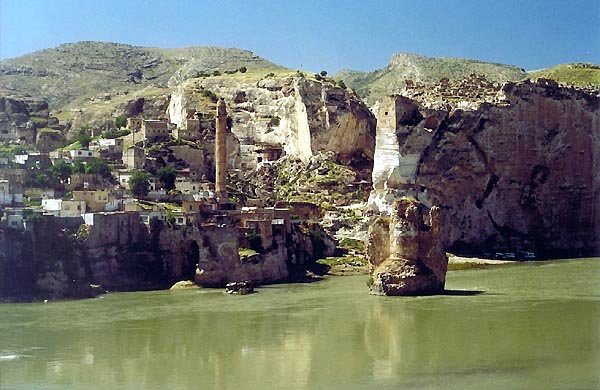
Figure 10 [Photo © M.Rejzek] SE Turkey, Hasankeyf, Tigris river 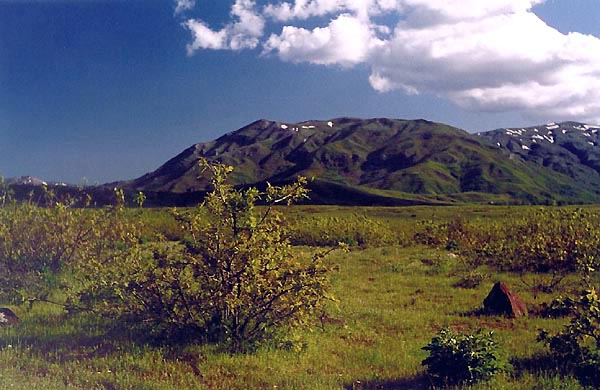
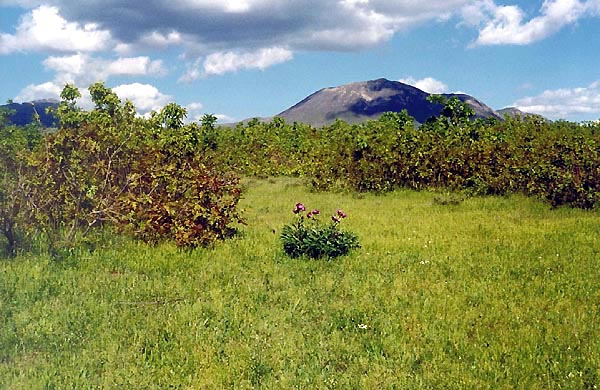
Figures 11 - 12 [Photo © M.Rejzek] E Turkey, 17-20 km W Tatvan, 3830N 4209E, 20.V.2001 |
The third locality we planned to search, Buglan Gecidi (Figures 13 - 18), is in my opinion by far the most interesting and richest place in Turkey. The pass is situated between the cities Mus and Bingöl in Serafettin Mts. on the border of the subalpine grass-steppes of eastern Anatolia and the dry Quercus brantii forest-steppe. The reason for the unusual species diversity and the very high degree of endemism of this relatively small place is still an enigma for us. In only few days we recorded a whole spectrum of Cerambycidae species: Cortodera colchica Reitter, Cortodera syriaca Pic, Stenocorus (Anisorus) quercus (Götz), Rhagium (Megarhagium) syriacum phrygium Daniel, Purpuricenus dalmatinus Sturm, Plagionotus (Plagionotus) arcuatus arcuatus (Linnaeus), Dorcadion (Cribridorcadion) mniszechi mniszechi Kraatz, Dorcadion holzschuhi Breuning, Agapanthia (Homoblephara) fallax Holzschuh, Agapanthia (Smaragdula) frivaldszkyi Ganglbauer, Agapanthia (Epoptes) simplicicornis Reitter, Mallosia (Eumallosia) imperatrix tauricola K.Daniel, Pteromallosia albolineata (Hampe), Phytoecia (Helladia) plasoni Ganglbauer, Phytoecia (Helladia) armeniaca armeniaca Frivaldszky, Phytoecia (Helladia) millefolii millefolii (Adams), Phytoecia (Helladia) praetextata praetextata (Steven), Phytoecia (Helladia) diademata Faldermann, Phytoecia (Semiangusta) katarinae Holzschuh, Phytoecia (Phytoecia) asiatica Pic, Phytoecia (Phytoecia) annulipes Mulsant et Rey, Phytoecia (Musaria) anatolica Fuchs et Breuning, Phytoecia (Musaria) puncticollis puncticollis Faldermann, Phytoecia affinis tuerki Ganglbauer, Phytoecia (Paracoptosia) compacta compacta (Ménétries), Phytoecia (Paracoptosia) bithynensis Ganglbauer, Phytoecia (Opsilia) caerulescens (Scopoli), but most importantly one specimen of a very nice and still undetermined Clytus species resembling Clytus vesparum Reitter. The species was later described by Stanislav Kadlec as Clytus buglanicus in 2005.
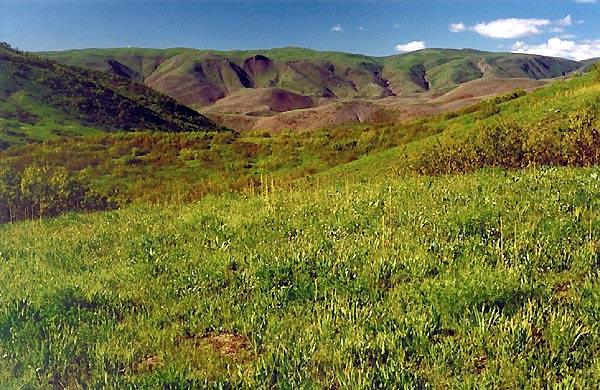
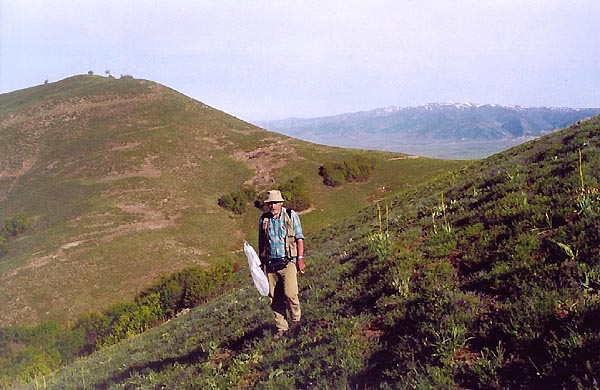
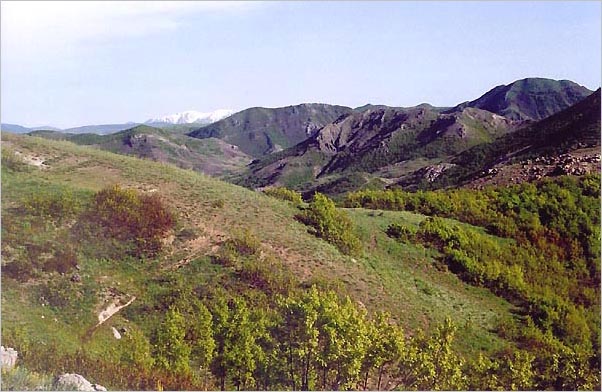
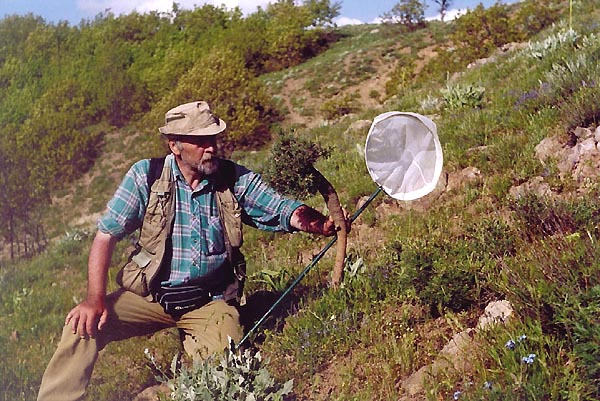
Figures 13 - 16 [Photo © M.Rejzek] E Turkey: Buglan Gecidi NW Mus, 3856N 4108E, 21.-24.V.2001 |
On our way home we shortly collected in the surroundings of Elazig (where we collected Phytoecia (Neomusaria) salvicola Holzschuh, Mallosia (Eusemnosia) interrupta interrupta Pic, and Mallosia (Micromallosia) heinzorum Holzschuh, Darende (Dorcadion menradi Holzschuh, Dorcadion merkli Ganglbauer, and Mallosia (Micromallosia) heydeni (Ganglbauer), Tokat (Anaglyptus mysticoides Reitter, Pseudosphegesthes samai Danilevsky, Cortodera humeralis orientalis Adlbauer, and Chlorophorus dominici Sama), Sinop (Dorcadion sinopense Breuning, Dorcadion pseudopreissi Breuning, and Dorcadion rufipenne major Breuning), and finally Kastamonu (Dorcadion (Cribridorcadion) preissi Heyden).
